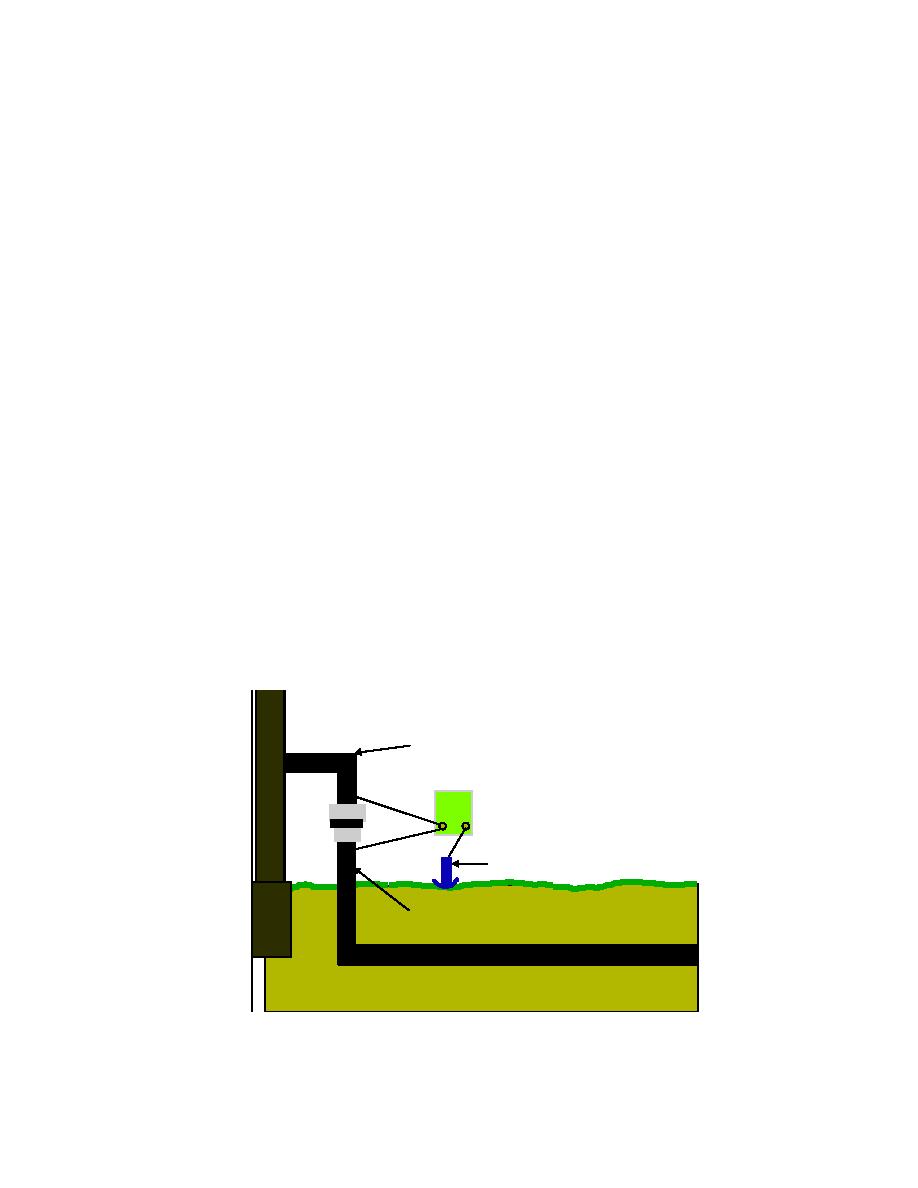
UFC 3-570-06
JANUARY 31 2003
conclusive. The preferred method to determine if a dielectric may be shorted is by
potential testing. This method will normally provide an immediate indication if the
dielectric is not shorted, and at the same time provide valuable potential data. If this
method indicates the dielectric may be shorted, other methods of verification are be
required. The radio frequency tester (insulated flange tester) should be used when a
shorted condition is indicated by potential measurements. Alternate methods of
verification may be used to test installed dielectrics. These methods include the pipe
locator method (paragraph 7-7.3), which can determine that an installed dielectric is
bad, but does not give conclusive evidence if the test indicates that the dielectric is
good; and the power supply method (paragraph 7-7.4), which can determine that an
installed dielectric is good, but does not give conclusive evidence if the test indicates
that an installed dielectric is bad.
the dielectric is good, current will flow through the meter and damage could result. If
that current does not damage the meter, the measurement would not indicate a
resistance value. The voltage would be interpreted by the meter as coming from the
internal battery instead of the external electrical circuit being measured.
7-7.1
Testing for a Shorted Dielectric. Take a potential measurement of both
sides of the installed dielectric by changing only the structure connection, without
moving the copper/copper sulfate reference electrode.
Figure 7-13. Testing for a Shorted Dielectric
Test Station or
Metallic Contact
to Pipeline
House Side of Dielectric
1
+ -
2
Reference
Electrode
Street Side of Dielectric
7-7.1.1
If the two potential measurements are significantly different (over 10 mV), the
7-23



 Previous Page
Previous Page
